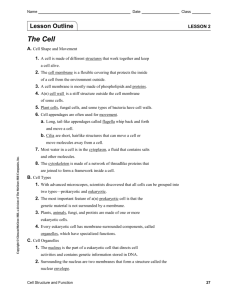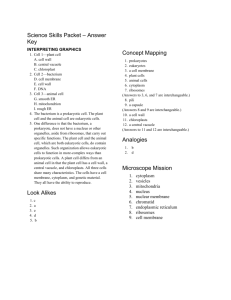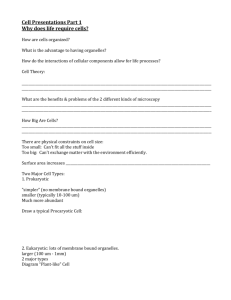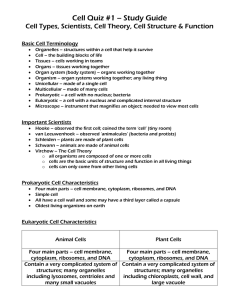Cell Structure & Function: Lesson Outline for Biology
advertisement
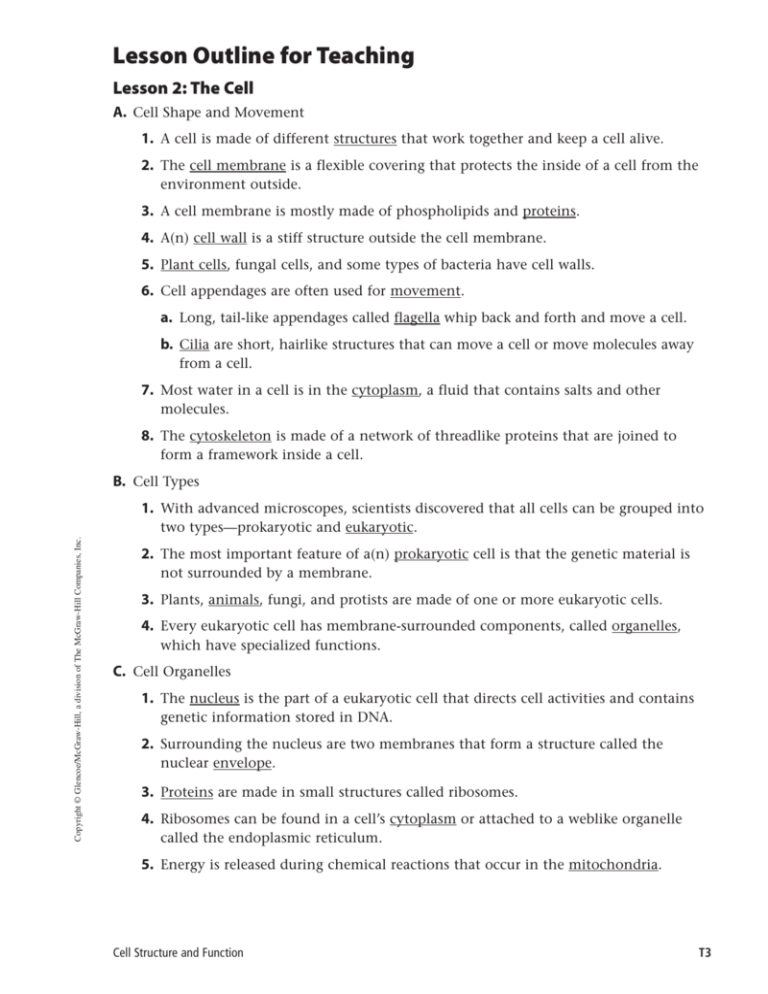
Lesson Outline for Teaching Lesson 2: The Cell A. Cell Shape and Movement 1. A cell is made of different structures that work together and keep a cell alive. 2. The cell membrane is a flexible covering that protects the inside of a cell from the environment outside. 3. A cell membrane is mostly made of phospholipids and proteins. 4. A(n) cell wall is a stiff structure outside the cell membrane. 5. Plant cells, fungal cells, and some types of bacteria have cell walls. 6. Cell appendages are often used for movement. a. Long, tail-like appendages called flagella whip back and forth and move a cell. b. Cilia are short, hairlike structures that can move a cell or move molecules away from a cell. 7. Most water in a cell is in the cytoplasm, a fluid that contains salts and other molecules. 8. The cytoskeleton is made of a network of threadlike proteins that are joined to form a framework inside a cell. B. Cell Types 1. With advanced microscopes, scientists discovered that all cells can be grouped into Copyright © Glencoe/McGraw-Hill, a division of The McGraw-Hill Companies, Inc. two types—prokaryotic and eukaryotic. 2. The most important feature of a(n) prokaryotic cell is that the genetic material is not surrounded by a membrane. 3. Plants, animals, fungi, and protists are made of one or more eukaryotic cells. 4. Every eukaryotic cell has membrane-surrounded components, called organelles, which have specialized functions. C. Cell Organelles 1. The nucleus is the part of a eukaryotic cell that directs cell activities and contains genetic information stored in DNA. 2. Surrounding the nucleus are two membranes that form a structure called the nuclear envelope. 3. Proteins are made in small structures called ribosomes. 4. Ribosomes can be found in a cell’s cytoplasm or attached to a weblike organelle called the endoplasmic reticulum. 5. Energy is released during chemical reactions that occur in the mitochondria. Cell Structure and Function T3 Lesson Outline continued 6. ATP is the fuel for cellular processes such as growth, cell division, and material transport. 7. Chloroplasts are membrane-bound organelles that use light energy to make glucose from water and carbon dioxide. This energy drives a process known as photosynthesis. 8. The Golgi apparatus prepares proteins and packages them into ball-like structures called vesicles. 9. Lysosomes are organelles that help recycle cellular components. 10. Vacuoles are organelles that store food, water, and waste material. Discussion Question What are the different structures that are found in cells? Structures found in cells include cell membrane, cell wall, flagella, cilia, cytoplasm, cytoskeleton, nucleus, ribosomes, endoplasmic reticulum, mitochondria, chloroplasts, Golgi apparatus, vacuoles, and lysosomes. Copyright © Glencoe/McGraw-Hill, a division of The McGraw-Hill Companies, Inc. T4 Cell Structure and Function
